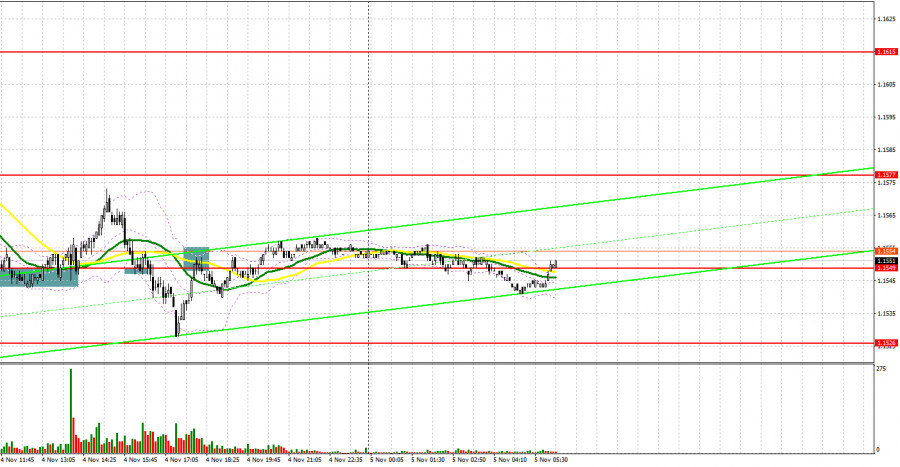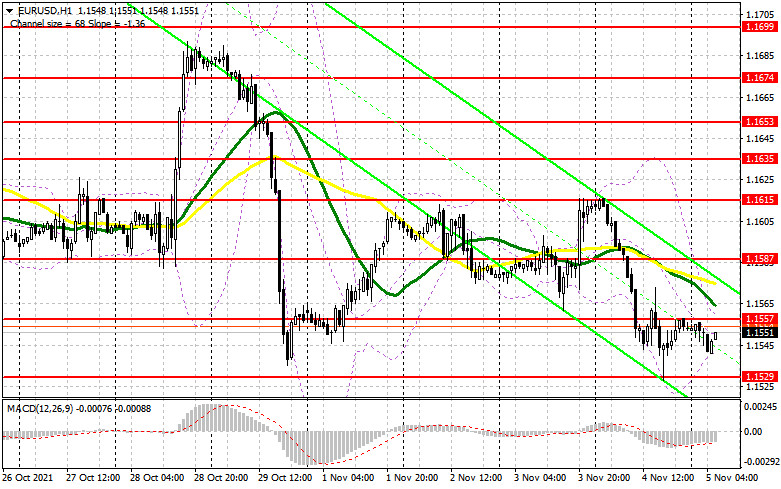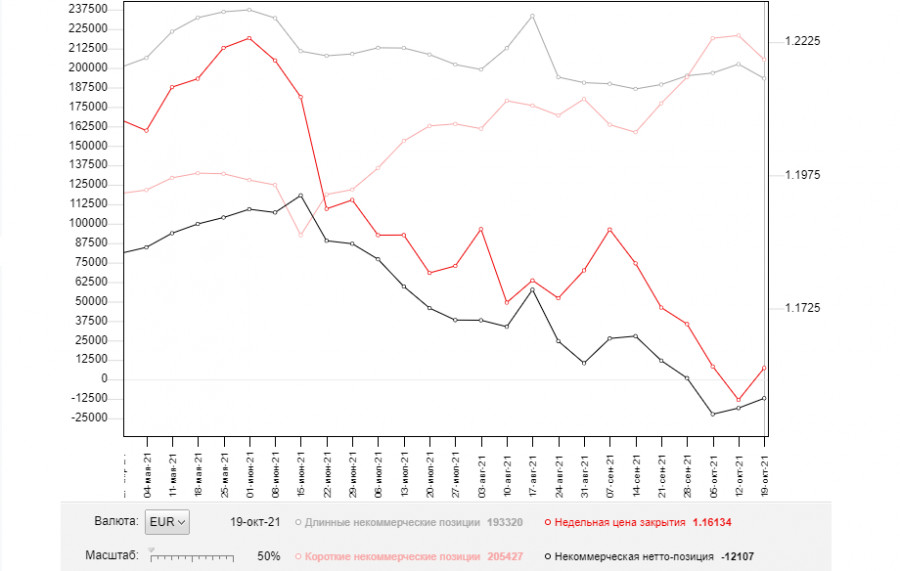Long positions on EUR/USD:
Since there were enough entry signals yesterday, let's look at the M5 chart and analyze them. The focus was on 1.1574 where I told you to consider entering the market. The price broke and consolidated below 1.1574 and a retest of this mark produced a strong SELL signal. As a result, the quote fell by around 25 pips and touched the support level of 1.1549, where a false breakout generated a BUY signal. By the open of the North American session, traders were unwilling to sell the euro at 1.1549 and the quote rose by 25 pips. Bears took advantage of the situation and the price fell to 1.1526.

Investors are awaiting the release of US labor market data that is likely to determine the greenback's further direction. In the first half of the day, an industrial production report will come out in the eurozone, which is likely to trigger market volatility. In case of positive results, the euro is expected to retrace upward and break the resistance level of 1.1557. Slightly above this level, there are moving averages limiting the pair's upside potential. Only a breakout and a retest of this level bottom/top will produce a BUY entry point with the target at 1.1587 where traders should lock in profit. A breakout of this range depends solely on the outcome of the Nonfarm Payrolls report. A test at 1.1587 top/bottom might generate an additional BUY signal and return EUR/USD to the upper boundary of a wide sideways channel at 1.1615. In case of pressure on the pair and disappointing results in the eurozone, especially retail sales, only a false breakout at around 1.1529 might give a strong BUY signal with a possibility of an upward retracement. If there is a lack of bull activity at 1.1529, traders should wait for a false breakout to enter the market. Meanwhile, long positions on EUR/USD could be opened immediately on a rebound from the low of 1.1454, or even lower – from 1.1426, allowing a 15-20 pips correction intraday.
Short positions on EUR/USD:
Yesterday, bulls returned the pair to the lower boundary of the sideways channel located at 1.1529. Today, the focus is on this level. Before that, bears should carefully think about how to protect the resistance level of 1.1557. Only disappointing fundamental results in the eurozone showing a decrease in industrial production and a decline in retail sales, as well as a false breakout at 1.1557, could produce a SELL signal. In such a case, the target will be seen at the support level of 1.1529. Both bears and bulls are likely to try to gain control over this mark. A breakout and a test of this level bottom/top could give an additional SELL signal with the target at 1.1449. If so, EUR/USD is expected to plunge to 1.1454 where traders should lock in profit. Another target is seen at the support level of 1.1426. The quote might approach this barrier only in case of strong labor market results in the US. If there is a bullish movement in the first half of the day and a lack of bear activity at 1.1557, it would be wise to go short after the price test the high of 1.1587. Short positions could be opened immediately on a bounce from the resistance level of 1.1615, allowing a 15-20 pips correction.

The Commitment of Traders (COT) report as of October 19 logged a decrease in both short and long positions, which led to a slight recovery in the negative delta since more bears than bulls exited the market. Business activity in the manufacturing and services sector in the eurozone declined this week. However, a more serious problem affecting the euro in the short term is the fourth wave of the coronavirus pandemic that is now tightening its grip on the European Union. A steady pace of business activity and the beginning of the tapering process in the United States will provide support for the American economy. At the same time, the greenback is unlikely to take advantage of the situation because investors could turn to risk assets. The COT report revealed that long non-commercial positions fell to 193,320 from 202,512, while short non-commercial positions dropped to 205,427 from 220,910. At the end of the week, the total non-commercial net position increased to -12,107 versus -18,398. The weekly closing price rose to 1.1613 from 1.1553.

Indicator signals:
Moving averages
Trading is carried out below 30- and 50-period MAs, indicating a bearish market.
Important! The period and prices of moving averages are viewed by the author on the hourly H1 chart and differ from the general definition of classic daily moving averages on the D1 chart.
Bollinger Bands
In case of growth, the quote is likely to encounter resistance at the upper band at around 1.1557. Support is seen at the lower band at around 1.1535.
Indicator description:
- Moving average (MA) determines the current trend by smoothing volatility and noise. Period 50. Colored yellow on the chart.
- Moving average (MA) determines the current trend by smoothing volatility and noise. Period 30. Colored green on the chart.
- Moving Average Convergence/Divergence (MACD). Fast EMA 12. Slow EMA 26. SMA 9.
- Bollinger Bands. Period 20
- Non-commercial traders are speculators such as individual traders, hedge funds, and large institutions who use the futures market for speculative purposes and meet certain requirements.
- Long non-commercial positions are the total long position of non-commercial traders.
- Non-commercial short positions are the total short position of non-commercial traders.
- The total non-commercial net position is the difference between short and long positions of non-commercial traders.
from RobotFX















 Download NOW!
Download NOW!
No comments:
Post a Comment